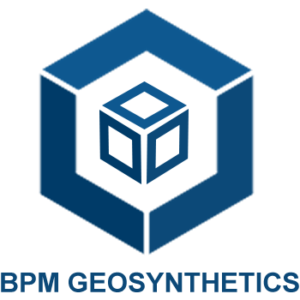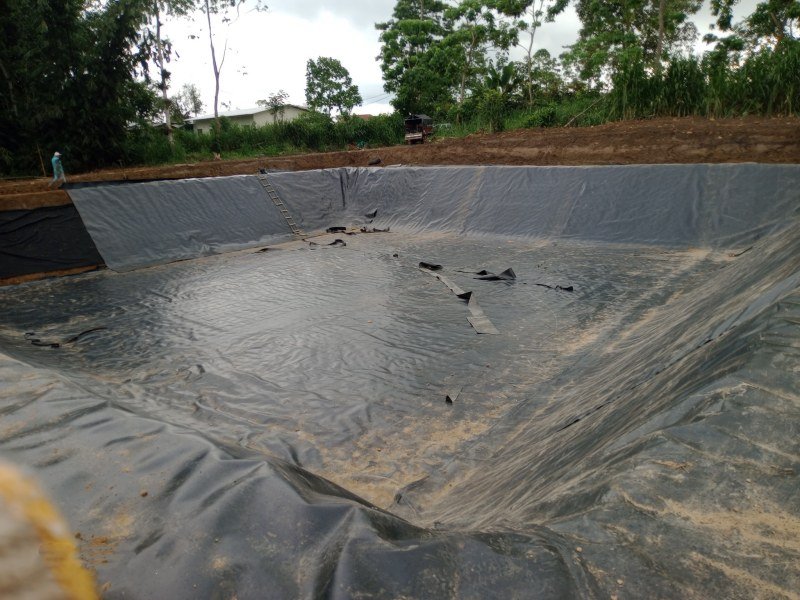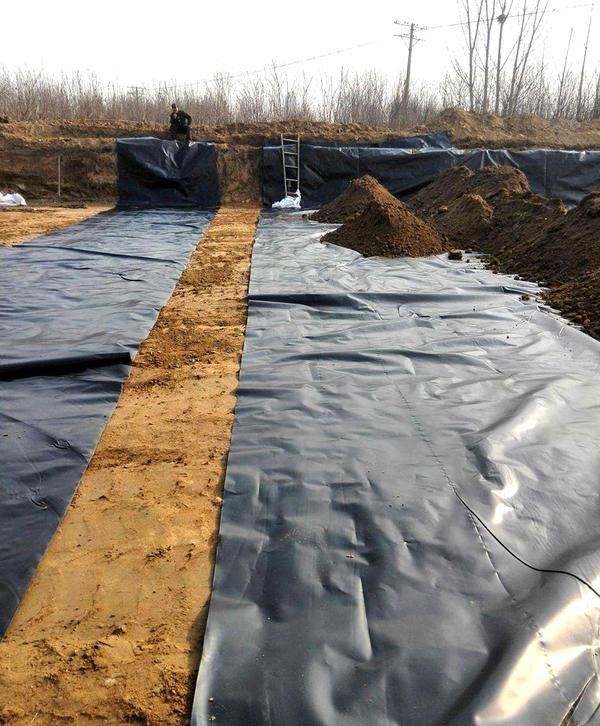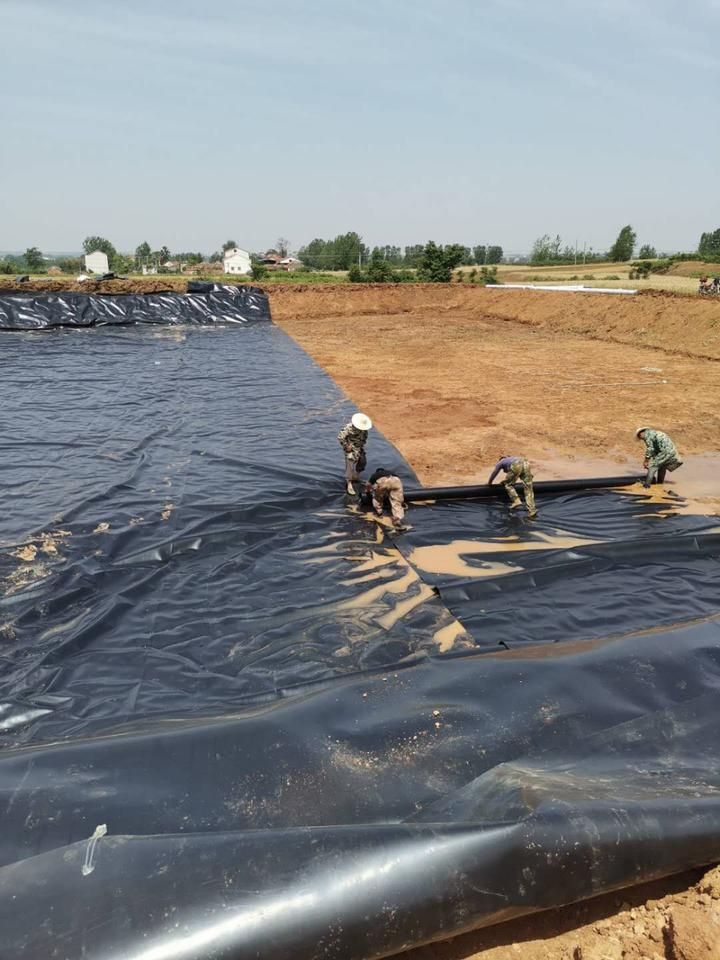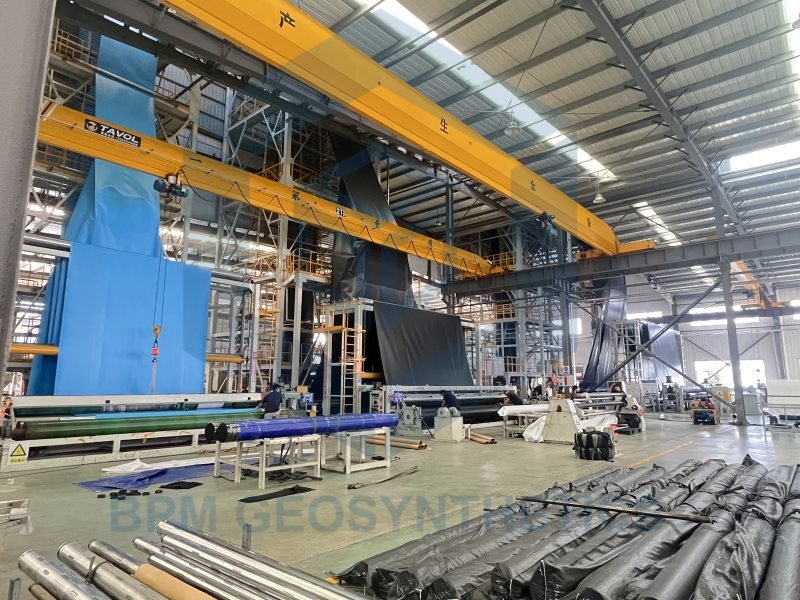1. What Is 20 Mil HDPE Liner?
20 Mil HDPE Liner(Geomembrane)is a waterproof barrier. It is also called geomembrane or anti-seepage membrane. Made from pure HDPE resin, it stops liquids from leaking into soil. This protects groundwater and surface water.
It resists chemicals and prevents seepage well. Common uses include landfills, chemical plants, mines, and reservoirs. Its key features are strength, flexibility, and water resistance. It’s also lightweight and cost-effective.
These advantages make it ideal for construction projects. It’s used in dams, canals, artificial lakes, and water storage systems. Warehouses and cofferdams also benefit from its waterproofing properties.

Key Features of 20 Mil HDPE Liner:
20 Mil HDPE Liner Features:
1.1 20 MiL Geomembrane Liner is a flexible waterproof material with a high impermeability coefficient (1×10-17cm/s);
2. HDPE Pond Liner has good heat resistance and cold resistance, and its use environment temperature is high temperature 110℃ and low temperature -70℃:
3. 20 Mil Dam Liner has good chemical stability and can resist corrosion from strong acids, alkalis, and oils, making it a good anti-corrosion material;
4. 20 Mil HDPE Sheet has high tensile strength, which makes it have high tensile strength and can meet the needs of high-standard engineering projects;
5. 20 Mil HDPE Liner has strong weather resistance and strong anti-aging performance, and can be used for a long time in naked exposure while maintaining its original performance;
6. The overall performance of 20 Mil HDPE Geomembrane Liner, it has strong strength and elongation at break, so that 20 Mil geomembrane can be used in various harsh environments.

2.What Are Advantages Of 20 Mil HDPE Liner?
2.1. Excellent anti-seepage performance
The anti-seepage coefficient of 20 Mil HDPE Liner is high, generally reaching 10⁻¹⁰ – 10⁻¹²cm/s. This is because its material has a tight molecular structure, which can effectively prevent the passage of water, gas, etc., and is extremely effective in preventing liquid leakage.
2.2. Strong chemical stability
It has strong tolerance to most chemicals such as acids, alkalis, and salts. For example, in the pH range of 2-12, the performance of the geomembrane is basically unaffected, and it can be used for a long time in various harsh chemical environments without chemical reactions that cause performance degradation.
2.3. Good durability
It has high tensile strength and tear strength. 20 Mil HDPE Liner, with a tensile strength of up to tens of MPa, can withstand large external impacts without being easily damaged. At the same time, it also has good weather resistance, can resist the influence of ultraviolet radiation, temperature changes and other factors, and can have an outdoor service life of up to decades.
2.4. Convenient construction
It is light in texture and easy to carry and lay. It can be cut into suitable sizes according to engineering requirements and can be connected by a variety of welding or bonding methods, such as hot melt welding, which can quickly and firmly connect 20 Mil HDPE Liner together to form a continuous anti-seepage barrier.
3.What Are Disadvantage Of 20 Mil HDPE Liner?
3.1 High requirements for foundation conditions
The anti-seepage effect of 20 Mil HDPE Liner depends largely on the foundation conditions for its laying. If the foundation is uneven, has sharp objects or cracks, it can directly affect the anti-seepage performance and service life of 20 Mil HDPE Liner. Therefore, before laying 20 Mil HDPE Liner, the foundation must be strictly inspected and treated to ensure that it meets the laying requirements.
3.2 Susceptible to UV rays
Although 20 Mil HDPE Liner has good weather resistance, it will still age if exposed to strong ultraviolet rays for a long time, resulting in performance degradation. Therefore, when used outdoors, sunshade and sunscreen measures should be taken to protect 20 Mil HDPE Liner from ultraviolet rays.
3.3 High cost
HDPE Liner is a high-performance engineering material with a relatively high price. This limits its application in some low-cost engineering projects to a certain extent. However, considering the effects of geomembranes in anti-seepage, isolation and other aspects as well as their long service life, its cost-effectiveness is still highly competitive.
4.What Are Application Of 20 Mil HDPE Liner?
4.1. Water Conservancy Project
Reservoir anti-seepage: Laying geomembranes at the bottom of reservoir dams and reservoir areas can effectively prevent water leakage in reservoirs, improve the water storage capacity of reservoirs, and reduce water resource waste. For example, after some small mountain ponds and reservoirs were treated with geomembranes for anti-seepage, the effective storage capacity of the reservoirs increased significantly.
Channel anti-seepage: It can reduce leakage losses during channel water delivery and improve the utilization efficiency of irrigation water. According to statistics, the amount of water leakage in channels using geomembranes for anti-seepage can be reduced by 70% – 90%, while also reducing channel siltation and extending the service life of channels.
4.2. Environmental Protection Project
Landfill anti-seepage: This is one of the important applications of geomembranes in the field of environmental protection. Laying geomembranes at the bottom and around landfills can prevent leachate from polluting soil and groundwater. Leachate contains a large amount of harmful substances, such as heavy metal ions, organic pollutants, etc. Geomembranes can block these pollutants inside the landfill.
Tailings dam anti-seepage: For mine tailings dams, geomembranes can prevent the leakage of harmful substances in the tailings slurry, avoid pollution to the surrounding environment, and protect the ecological environment.
4.3. Construction Engineering
Basement waterproofing: Using geomembranes for waterproofing on basement floors, exterior walls and other parts can effectively solve the problem of basement leakage. Compared with traditional waterproofing methods, geomembrane waterproofing has the advantages of simple construction and good waterproofing effect.
Roof waterproofing: The roofs of some large industrial plants, warehouses, etc. use geomembranes for waterproofing, which can resist the erosion of rainwater, snow water, etc. and extend the service life of the roof.
4.4. Agricultural Engineering
Greenhouse moisture retention: Laying geomembranes on the ground and sides of greenhouses can reduce soil moisture evaporation, maintain stable humidity in the greenhouse, and is conducive to the growth of crops. At the same time, it can also prevent soil nutrient loss and improve fertilizer utilization.
4.5 Seepage prevention of aquaculture ponds
Laying geomembranes at the bottom of aquaculture ponds such as shrimp ponds and fish ponds can prevent pond water leakage, save water resources, and avoid direct contact between aquaculture water and soil, reducing the occurrence of diseases and insect pests.
BPM Geosynthetics has been manufacturing and exporting geo liners and geotextiles since 2009. Our professional sales team is ready to assist you in selecting the right products for your needs. For inquiries, please contact us—we will respond promptly.
